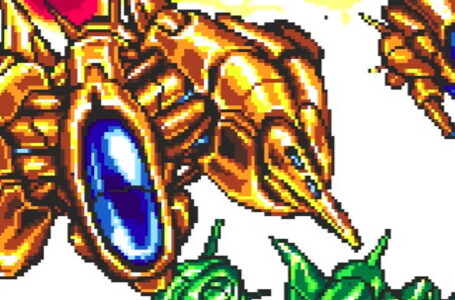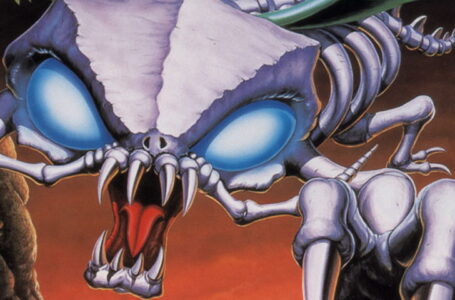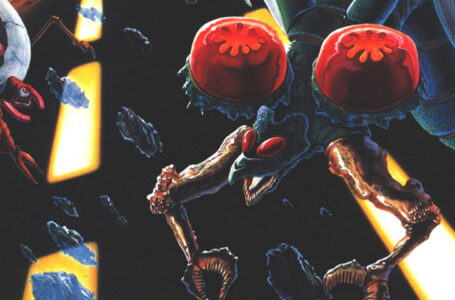Blissful Death: Thunder Force II gives it to you from above and to the side
The Thunder Force series by Technosoft (a company noteworthy for, among other things, seemingly never Romanising its name the same way twice) is, these days, primarily associated with the Mega Drive platform — and particularly its excellent third and fourth installments, which were showcases for the console’s capabilities back in the day.
But the second Thunder Force game, which was actually a launch title for the North American release of the Mega Drive — aka the Genesis — is an interesting game in its own right, primarily because it’s seemingly very different from its better known successors. But it’s also a tie to the series’ past.
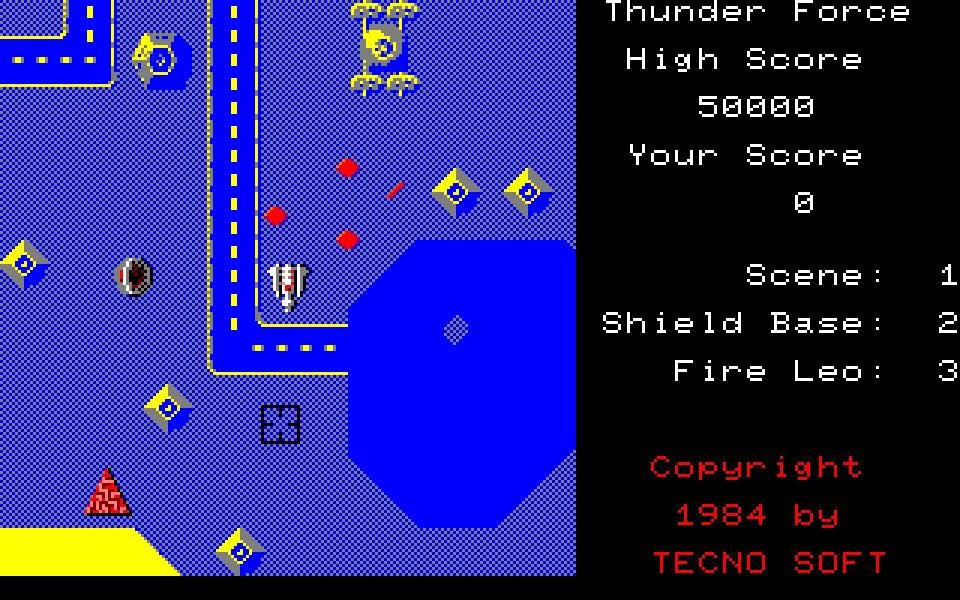
Thunder Force actually began its life on Japanese home computers, y’see — specifically, the Sharp X1 and MZ-1500, and the NEC PC-6001 and PC-8801. This was an age when the “PC” as we know it today wasn’t anywhere near as dominant a force in the market as it is today; there were a lot of proprietary home computers out there, especially in Japan — and Sharp and NEC’s offerings were among the most popular.
The first Thunder Force is not a side-scrolling shoot ’em up as the series is primarily known today. Instead, it’s a free-roaming, top-down shoot ’em up in which you explore levels in order to destroy shield generators and eventually defeat a powerful weapon called the Dyradeizer. It was reasonably well-received on its original release — well enough for it to get ported to the more powerful Fujitsu FM-7 and NEC PC-9801 machines with improved visuals, more levels and a level editor.
Why is this relevant? Because Thunder Force II, which initially released on the Sharp X68000 computer in 1988 before being ported to Mega Drive, is very much a game that bridges the gap between the original Thunder Force and the more well-known entries in the series: it incorporates both the top-down exploratory shooting of the original game and the side-scrolling blasting of the later titles. And as such, playing it today makes for a rather refreshing experience.
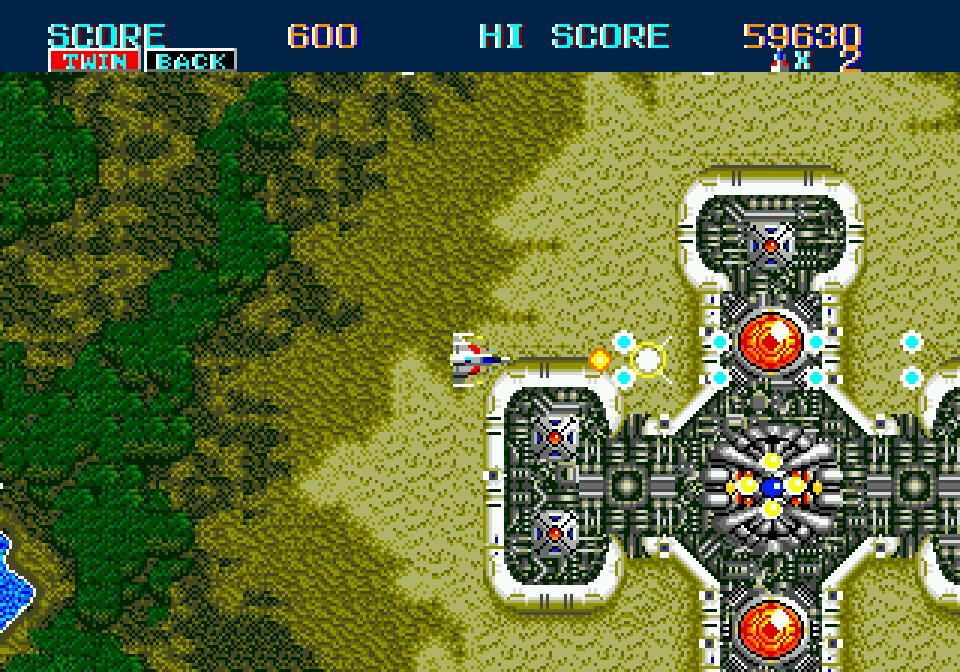
Thunder Force II alternates between its two main components in each level. You begin each stage exploring a free-roaming map which loops around on itself. Your mission: destroy a series of enemy bases. You have no radar or map, so you’ll need to make use of landmarks and the wreckage you create to orient yourself; the stages are often also divided into discrete areas using walls that can be broken in specific locations, so if all else fails, follow a wall!
Since the nature of this type of game makes it difficult to have the sort of of tightly choreographed, scripted encounters typically seen in more conventional horizontal or vertical scrollers, Thunder Force II’s enemy encounters occur in a semi-randomised fashion.
As you fly around, enemy groups spawn randomly, often supported by the ground installations you haven’t yet destroyed. The actual make-up of the groups is predefined, meaning you can learn to recognise these patterns — but the key difference from more linear shoot ’em ups is that you don’t know exactly when you’re going to face each type of formation. As such, you’ll need to learn how to react on the fly rather than simply learning a level.
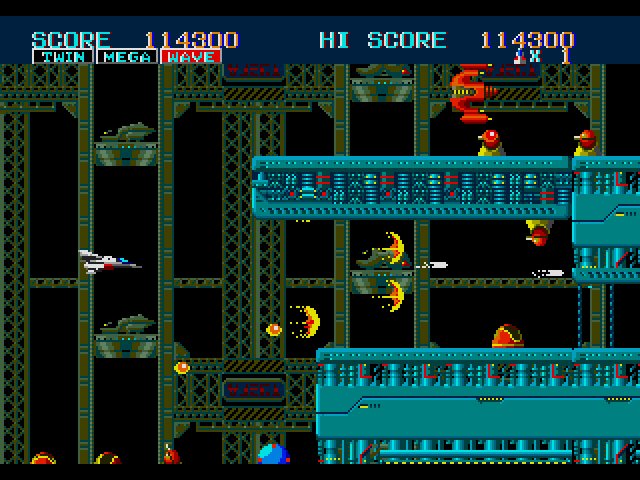
By contrast, the side-scrolling segments, which occur after you’ve destroyed all the enemy bases in the first part of a stage, are much more traditional — though they do still tend to offer the choice between several different routes on occasion. Normally this boils down to a choice between a safe but low-scoring route, and a risky but rewarding route. True arcade action.
The game’s power-up system makes use of an “inventory” that you can switch between rather than simply replacing your current weapon with whatever you pick up. This is because different weapons have different uses under different circumstances, and as such it pays to have a varied arsenal on hand with which to protect yourself. You do lose everything except your basic forward and backwards shots if you die, though. So don’t die.
This is easier said than done, of course; the sadistic glee with which Thunder Force II seems to spawn power-ups just as the screen is filled with bullets is both hilarious and upsetting, and successfully holding on to any special weapons for more than about twenty seconds always feels like a historic achievement. This is a game that isn’t afraid to kick you squarely in the bottom if you don’t get to grips with its idiosyncrasies.
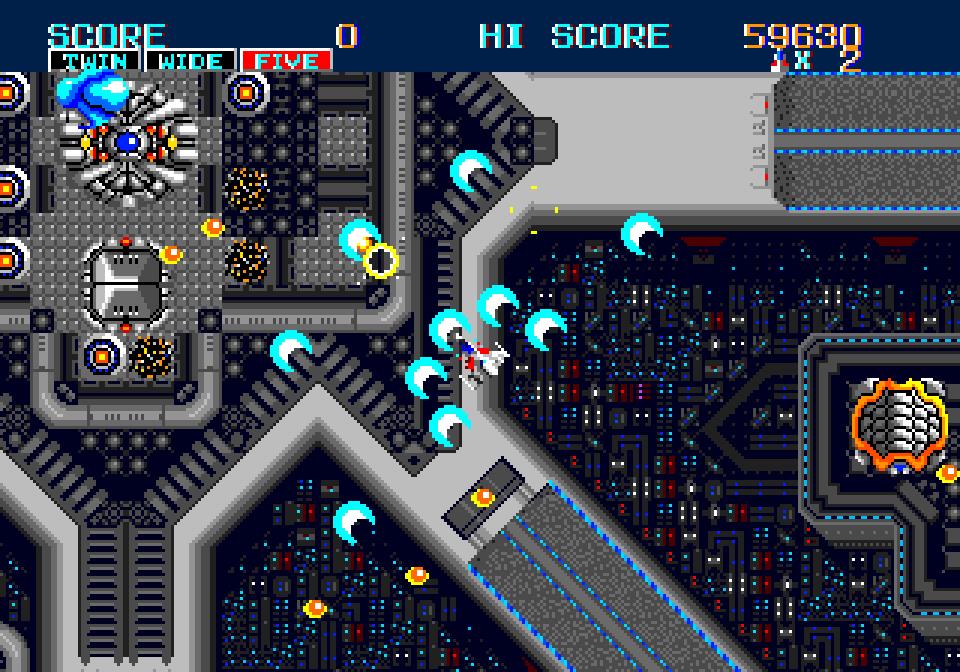
But crucially, it’s fun. While it looks quite dated compared to its successors — even though the considerably more impressive Thunder Force III only came out a year later — it still plays smoothly and responsively, and the varied gameplay is enjoyable to engage with, particularly as “free-roaming top-down shooter” is not something we tend to see a lot these days outside of the twin-stick subgenre.
While history will likely always consider Thunder Force III and IV to be the more influential, genre-defining games, don’t sleep on Thunder Force II; it’s an excellent addition to the Mega Drive’s enormous library of excellent shoot ’em ups. It’s just a shame that it never got a Sega Ages release like III and IV did…
Join The Discussion
Rice Digital Discord
Rice Digital Twitter
Rice Digital Facebook
Or write us a letter for the Rice Digital Friday Letters Page by clicking here!
Disclosure: Some links in this article may be affiliate links, which means we may earn a small commission if you make a purchase after clicking on them. This is at no additional cost to you and helps support Rice Digital!
- Letter from the Editor: passing the torch - June 30, 2023
- Super Woden GP 2 is looking promising - June 30, 2023
- Inti Creates is making a 32 bit-style Love Live action platformer - June 26, 2023





